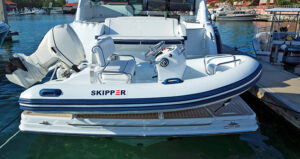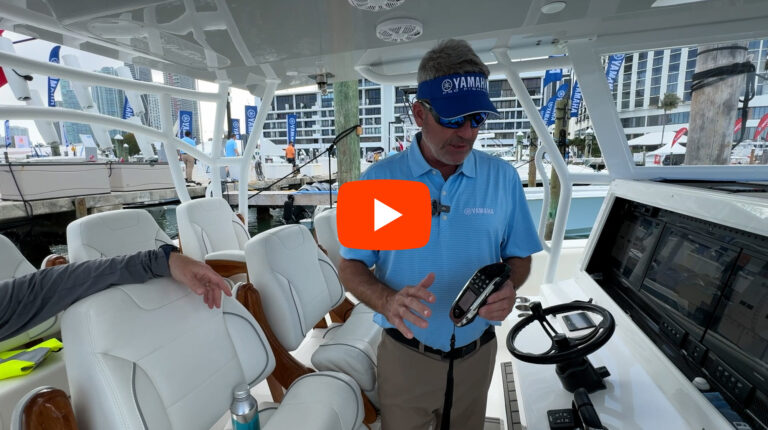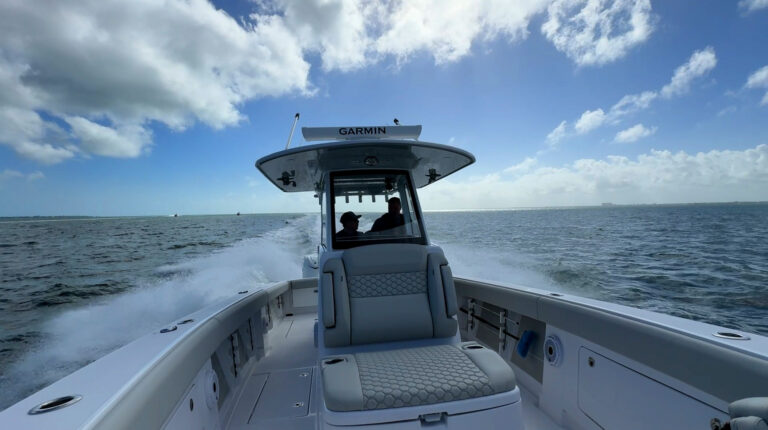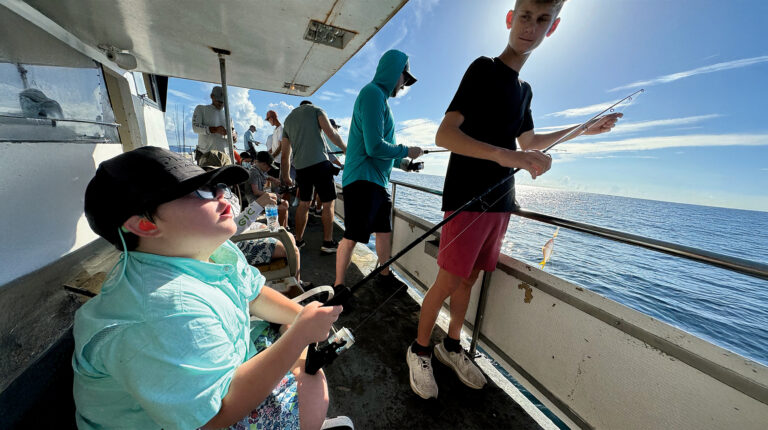Shallow Water Gems
Converted “jack-up” boats. World-class redfish and speckled trout. Louisiana’s Chandeleur Islands have it all.

Mention the Chandeleur Islands to just about any shallow-water fishing aficionado and you’ll likely see a knowing grin spread across their face. As the Florida Keys are renown for tarpon, bonefish and permit fishing on the flats, so the Chandeleurs are known for world-class redfish and speckled trout action. And not just a few fish, or small ones either. If you enjoy catching lots of big fish in a relatively pristine area, you’ve probably heard of this place and might even have visited.
This string of uninhabited barrier islands to the east of the Louisiana delta stretches about 45 miles from north to south, and the open Gulf lies east of them. Most of the Chandeleurs lie within the Breton National Wildlife Refuge, the second-oldest wildlife refuge in the U.S. You can get there from most ports on the east side of Louisiana Highway 23, which runs south from New Orleans to Venice, or you can cross over from Hopedale as well.
But many captains and anglers make the run south from Mississippi, from a jumping-off point somewhere between Biloxi and Pass Christian. It’s only about 30 miles from Pass Christian to the northernmost tip of the Chandeleurs, and from there, you have access to a vast number of locations to fish, all the way south to the Breton Islands at the southern end.
It’s a fairly long day trip no matter where you begin, so mothership operations that enable you to spend a few days and nights on-site have become the preferred option for lots of anglers seeking the relative solitude of the Chandeleurs. These vary in price and amenities, from simple liveaboard boats that provide small skiffs powered by tiller-handle outboards for you to fish on your own, to luxurious yachts that provide guides. Or you can bring your own boat. Many people enjoy wading these shallow waters.
We recently filmed an episode of Anglers Journal TV aboard a mothership that brings a new element to the game. The Chandeleur-Islander Lodge is a converted “jack-up” boat, a specialized vessel used extensively in the Gulf of Mexico oil fields. These boats have retractable legs, which can be raised to lift the boat above the surface of the water while working, then lowered to float the boat once more.
The main advantage of such a setup comes when bad weather pops up, often in the middle of the night. The jack-up rig is impervious to increased wave activity since it’s suspended in the air. No sudden attacks of midnight mal de mer here.
My old friend Bart Haddad of Southern Way Charters set us up with the new outfit because his own mothership operation was booked at the time. Capt. Ronnie Daniels, with whom I had fished with previously, agreed to guide us, and we made the run together from Pass Christian to the lodge, which sat about two-thirds of the way down the island chain.
The Chandeleurs have lots of places with fishy names, and others of historical significance: Redfish Point, Shrimp Boat Channel, Old Schooner Cut, Hollywood Bayou, etc. The islands scattered inside the crescent-shaped barrier chain have storied histories as well.
Freemason Island ranks as one of the best. Like all of the Chandeleurs, Freemason now exists as just a fraction of what it was historically, a narrow strip of shell and sand. But it once looked entirely different. “Fifty years ago or more, people lived on Freemason,” Daniels explained. “There was a farm here and there even was a landing strip for light planes at one point.”
Daniels guided us to Freemason late on our first afternoon, only to find a couple of boats had beat us there. A group of -waders cast from the western tip of the island, spreading out along the shoreline to cover as much water as possible. We saw several telltale “slicks” forming: oil rising to the surface where feeding gamefish were attacking schools of bait.
We cast top-water plugs at these slicks and immediately had our plugs smashed by large speckled trout. Catching big trout on top-waters ranks as one of the coolest experiences in light-tackle fishing in my book because it’s visual, and we had continuous action for almost two hours on specks between 3 and 7 pounds, until the light got so low we had to leave.
The next day, we fished a shallow bar on the north end of another nearby island where Daniels had experienced great action in the recent past. We had gone perhaps 100 yards on the electric trolling motor when a school of about 200 chunky redfish swarmed around the boat. We both hooked up almost instantly, and as we progressed down that bar after releasing those first two fish, wave after wave of the fat drum showed themselves, and they were all eager to eat.
In our three days in the Chandeleurs, we experienced some of the finest inshore action I’ve ever seen. The mothership aspect greatly enhances that experience because you can wake up early and be on-site, fishing when the sun comes up, either in a boat or wading the shallows. That’s hard to do when first you have to make a 40- or 50-mile run in the morning.
The Chandeleurs get smaller and smaller each year, and scientists tell us that one day they will cease to exist. Recent hurricanes like Georges and Katrina have wreaked havoc on the islands. Some now exist only as submerged sandbars, while others, like the once-populated and productive Freemason, cling to existence as literal slivers of what they once were.
I hope time proves the scientists wrong, but in the meantime, the fishing remains outstanding. If world-class, shallow-water action in a remote yet easy to reach locale appeals to you, you’ll find no better destination than Louisiana’s Chandeleur Islands.

Editor-at-Large Capt. John Brownlee is the executive producer of Anglers Journal TV. Catch JB and all the action on the Discovery Channel and on waypointtv.com.










